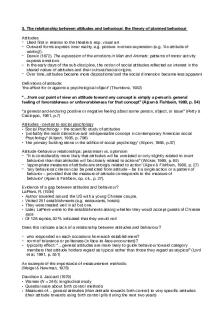Bulk Flow The Interplay between Filtration and Reabsorption PDF

| Title | Bulk Flow The Interplay between Filtration and Reabsorption |
|---|---|
| Course | Human Anatomy and Physiology with Lab II |
| Institution | The University of Texas at Dallas |
| Pages | 1 |
| File Size | 48.3 KB |
| File Type | |
| Total Downloads | 63 |
| Total Views | 149 |
Summary
Bulk Flow The Interplay between Filtration and Reabsorption...
Description
Bulk Flow: The Interplay between Filtration and Reabsorption Now let’s look at how filtration and reabsorption function together along the length of a typical capillary. The continuous net movement of water out of the capillaries, through peripheral tissues, and then back to the bloodstream by way of the lymphatic system is known as bulk flow. This process has four important functions: ■■ It ensures that plasma and interstitial fluid, two major components of extracellular fluid, communicate and exchange materials constantly. ■■ It accelerates the distribution of nutrients, hormones, and dissolved gases throughout tissues. ■■ It assists in the transport of insoluble lipids and tissue proteins that cannot cross the capillary walls and enter the bloodstream. ■■ It flushes out bacterial toxins and other chemicals, carrying them to lymphatic tissues and organs responsible for immunity to disease. Capillary blood pressure declines as blood flows from the arterial end to the venous end of a capillary. As a result, the rates of filtration and reabsorption gradually change as blood passes along the length of a capillary. The factors involved are diagrammed in Figure 21–11. The net capillary hydrostatic pressure is the difference between the hydrostatic pressure inside the capillary and the hydrostatic pressure outside the capillary. This pressure tends to push water and solutes out of capillaries and into the interstitial fluid. Factors that contribute to the net hydrostatic pressure include ■■ the capillary hydrostatic pressure (CHP), which ranges from 35 mm Hg at the arterial end of a capillary to 18 mm Hg at the venous end, and ■■ the interstitial fluid hydrostatic pressure (IHP). Measurements of IHP have yielded very small values that differ from tissue to tissue—from +6 mm Hg in the brain to –6 mm Hg in subcutaneous tissues. A positive IHP opposes CHP, so in this situation the tissue hydrostatic pressure must be overcome before fluid can move out of a capillary. A negative IHP assists CHP, and additional fluid will leave the capillary. However, under normal circumstances the average IHP is 0 mm Hg, and we can assume that the net hydrostatic pressure is equal to CHP. (...
Similar Free PDFs
Popular Institutions
- Tinajero National High School - Annex
- Politeknik Caltex Riau
- Yokohama City University
- SGT University
- University of Al-Qadisiyah
- Divine Word College of Vigan
- Techniek College Rotterdam
- Universidade de Santiago
- Universiti Teknologi MARA Cawangan Johor Kampus Pasir Gudang
- Poltekkes Kemenkes Yogyakarta
- Baguio City National High School
- Colegio san marcos
- preparatoria uno
- Centro de Bachillerato Tecnológico Industrial y de Servicios No. 107
- Dalian Maritime University
- Quang Trung Secondary School
- Colegio Tecnológico en Informática
- Corporación Regional de Educación Superior
- Grupo CEDVA
- Dar Al Uloom University
- Centro de Estudios Preuniversitarios de la Universidad Nacional de Ingeniería
- 上智大学
- Aakash International School, Nuna Majara
- San Felipe Neri Catholic School
- Kang Chiao International School - New Taipei City
- Misamis Occidental National High School
- Institución Educativa Escuela Normal Juan Ladrilleros
- Kolehiyo ng Pantukan
- Batanes State College
- Instituto Continental
- Sekolah Menengah Kejuruan Kesehatan Kaltara (Tarakan)
- Colegio de La Inmaculada Concepcion - Cebu















